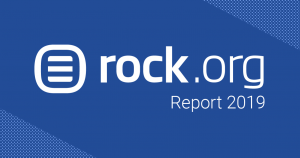There is so much information scattered all across the World Wide Web that people often don’t have the time to scour the internet to find what they need. So, wouldn’t it be nice to bring all of that information to one single site that people can access? That’s exactly what content aggregator sites do.
A content aggregator site compiles information from across the web in a single location to be accessed by those who need it. It can serve as a beneficial element of your content marketing plan.
Learn what content aggregation is, how it’s different from content curation, whether you should be concerned about plagiarism, and a few of the top content aggregator tools to use in 2022 below.
- What Is a Content Aggregator?
- Content Aggregation vs. Content Curation
- Content Aggregator: Is It Plagiarism?
- What Are the Benefits of Content Aggregators for Marketers?
- Best Content Aggregation Tools in 2022
- Wrap Up
What Is a Content Aggregator?
A content aggregator is either a person, company, or software tool that collects applications and web content from various online sources to reuse it. A content aggregator does not create its own unique and original content.
For instance, there are content aggregating news sites that will collect news-related stories from multiple sources and compile them on one site that is easily accessible for web users. It is ultimately a one-stop-shop website for all things news, from news articles to social media posts.
The end goal of a content aggregator is to gather and display relevant information related to a specific topic in one place to satisfy and engage visitors, while also achieving other business goals.
Content Aggregation vs. Content Curation
Content aggregation is different from content curation.
The main difference between content aggregation and content curation is the fact that content aggregation is automatic, whereas content curation is performed by an individual.
With content curation, the person’s context and/or commentary is often included, which increases the originality of the content. With content aggregation, an automated process is created to crawl the internet and find relevant stories, and there is no original content included.
For instance, if you wanted to gather content from Instagram using the hashtag #NBA, the content aggregator would collect all of the posts with that hashtag and deliver them to you/your website.
However, with content curation, you can gather more specific NBA-related content, such as a specific team or only images, while also adding your own text to it.
Content Aggregator: Is It Plagiarism?
When it comes to content aggregation, the first thing that pops into your mind may be plagiarism. And, as a marketer or brand, it makes sense to have this concern.
However, while there are numerous facets to the situation, it all comes down to one single fact: content cannot be aggregated from websites that don’t permit it. Some terms and conditions go along with being able to aggregate content from a website.
As long as you remain within the guidelines outlined in those terms and conditions, then content aggregation is a legal process that offers numerous benefits to everyone involved.
Visitors are content because they gain access to a large variety of content in one place rather than needing to search for the information on multiple websites.
Content creators remain content so long as the aggregator website is providing a link back to the original source, as this allows exposure of their content to a brand-new audience they may not have otherwise reached.
What Are the Benefits of Content Aggregators for Marketers?
There are many benefits to using content aggregators as a marketer or brand. Here is a look at just a few of them.
Access to a Larger Audience
As previously mentioned, marketers and brands get access to a much wider and broader audience when using content aggregators. People like to be able to go to one place and find everything they’re looking for without having to take the time to look elsewhere.
Therefore, as a marketer and brand, when you’re able to deliver relevant and valuable content to web users in a single feed, they will be happy, and it will help attract even more people to your brand.
Plus, the exposure to a new and wider audience allows you to improve your brand awareness and access opportunities that you didn’t have before.
Improve Audience Engagement
In order to take advantage of the audience you have and work to expand that customer base, you must get them engaged. Without engagement of any kind, users will turn elsewhere.
Believe it or not, content can serve as a great tool to engage your audience. Content that is interesting, engaging, and unique gives your audience something to talk about, whether in the comments or by sharing the post on social media for their followers to see.
So, content aggregation allows you to bring hot topics to your content marketing campaign that will also engage your audience and enhance your overall marketing campaign.
Potential for Increased Revenue
All the aforementioned benefits can help convert web visitors into customers. As these benefits are achieved through your customers, your brand will be in a better position to gain more conversions, sales, and customer acquisition, which will all lead to the growth of your brand.
Best Content Aggregation Tools in 2022
If becoming a content aggregator is something that you are interested in, numerous tools can be utilized to help. Here are a few of the best content aggregation tools in 2022.
#1: Octoparse

Octoparse is a web crawler, and it’s free of charge! Rather than giving content to people, it helps marketers who need large sources of content to collect such content from virtually any site. Data can be extracted with the built-in web scraping tool. No coding knowledge is needed.
Octoparse can aid in scraping content from sources like The New Yorker, Medium, and Reddit. This gathered content can then be uploaded to your own CMS.
It can also help in the collection of content from social media, which can aid in the monitoring of people’s interests and trending topics.
#2: Google News

Google News is a well-known news aggregator service that offers a continuous yet personalized flow of website links of content from thousands of different magazines, newspapers, and publishers.
When you need to collect content on a specific topic, this is by far one of the easiest sources of content to set up as a feed-collecting content aggregation tool.
One of the great things about Google News is that you can indicate a specific period in which you want the returned content to be. The pull-down menu offers options like the past day, week, or month, as well as a custom range of time.

E-mail news alerts are also available, which will push content related to a specific keyword or topic directly to your e-mail. Atom and RSS feeds are available for these alerts as well.
In order for Google News to be used as a content aggregator, an API will be needed to connect Google News to your CMS.
#3: Taggbox

Taggbox is an aggregator tool for social media content and is designed to assist marketers in the development of brand engagement and credibility.
When you sign up for an account, you can choose certain tags that are related to your business. You are then provided with numerous posts across all of the different and popular social media platforms.
You can create a social feed of this content that is displayed directly on your website.
#4: Castbox

Castbox is an impressive database of podcasts and can serve as an excellent source for content aggregation. With Castbox, you will have access to more than 95 million audio pieces, which include podcasts, FM radio, audiobooks, and more.
Castbox can be utilized to gather popular podcasts on numerous topics like business, music, news, gaming, and more. If you are looking for sources of podcast content for your audience, then Castbox is the content aggregation tool you want in your arsenal in 2022.
#5: Alltop

If you have been researching content aggregation at all, then Alltop is probably a name you’ve heard and come across. Alltop is designed to catch all of the latest posts from various websites on a wide assortment of topics.
The great thing about Alltop is that it offers an easy way to scan through the popular articles out there. You can search for specific topics and view aggregated content from some of the most popular blogs for said topic.
#6: Flockler

Flockler is an aggregator tool that focuses on social media outlets and allows you to accumulate social media feeds and news sources in one place. These feeds can be categorized based on specific keywords and tags.
Once you set up your feed, it will continue to update automatically. If there are posts you don’t want to see, there are moderation tools available to hide those posts from view.
#7: Feedly

The process of aggregation with Google News is automatic, but with Feedly, you have the option to create a fully personalized mix of content sources. You can even add your RSS feeds that you have come across.
Feedly ultimately focuses on helping people create their very own feed without being completely overwhelmed with information.
You can start with the free plan to see if it works well for you and then upgrade to a paid plan later. However, you have the opportunity to gain access to content from a variety of sources on several different topics.
Wrap Up
Content aggregators do not have to take up your entire marketing plan, but they can serve as a useful tool for marketers who are looking to gain exposure and expand brand reach.
And, although you may be pulling content from other sources for a content aggregator site, it is important to keep SEO in mind so that you can reach a larger audience and rise up through the SERPs.
Learn more about SEO here and how it can help to achieve your goals.









